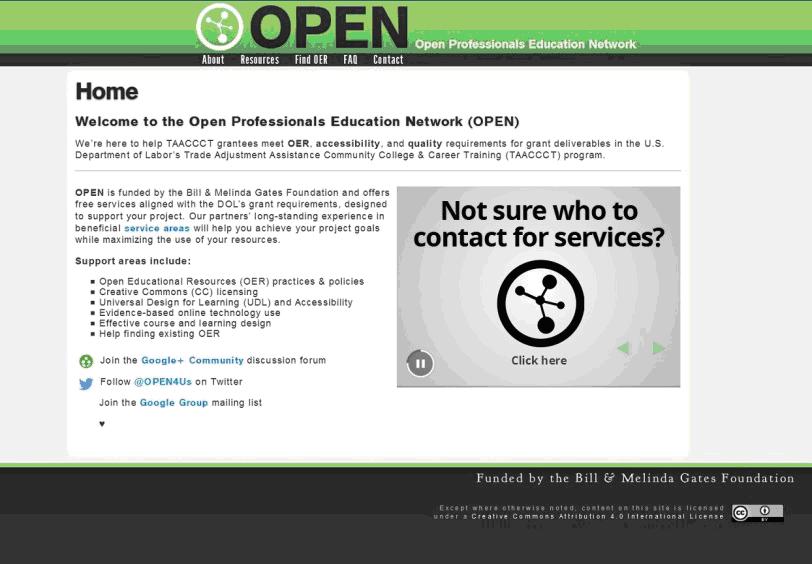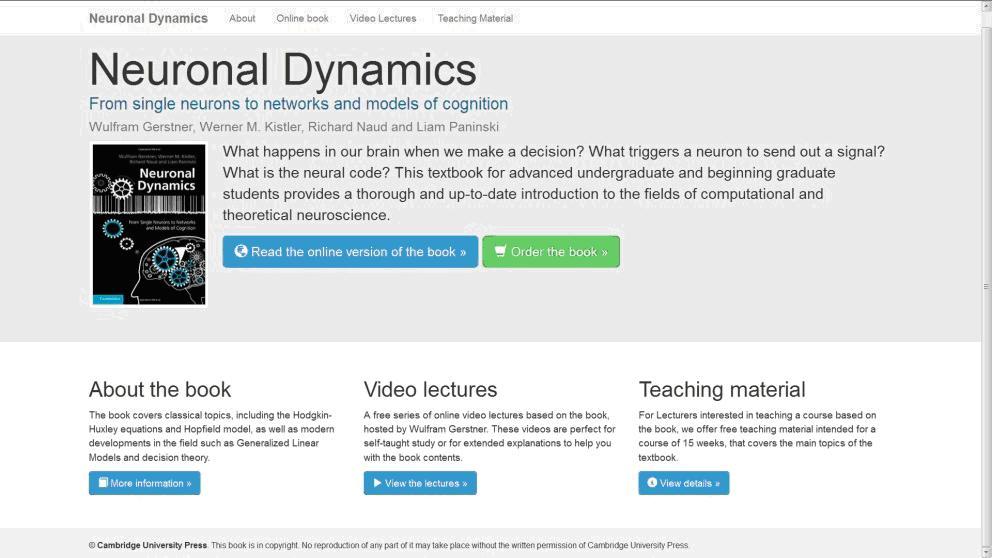Aim of the module
This module presents a quick view of the state of the art of OER in context of history and institutional involvement. We suggest considering OER as a tool for gathering real learning experiences which can be linked to employer or professional sector requirements.
Learning outcomes of the module
- Understanding of OER concept and benefits
- Ability to finding out a specific OER
- Recognition of OER good practice
Introduction
In 2001 the Massachusetts Institute of Technology (MIT) announced the majority of its courses on the internet were for free [34].
Because the number of institutions offering free or open courseware increased, UNESCO organized the 1st Global OER Forum in 2002 where the term Open Educational Resources (OER) was adopted and defined as “Teaching, learning and research materials in any medium, digital or otherwise, that reside in the public domain or have been released under an open license that permits no-cost access, use, adaptation and redistribution by others with no or limited restrictions. Open licensing is built within the existing framework of intellectual property rights as defined by relevant international conventions and respects the authorship of the work” [35].
UNESCO believes that OER support not only a strategic opportunity to improve the quality of education but also facilitate policy dialogue and knowledge sharing. Having support of the Hewlett Foundation, UNESCO created a global OER Community wiki in 2005 to share information and work collaboratively on issues surrounding the production and use of Open Educational Resources. UNESCO has been developing a new, innovative OER platform which will offer selected UNESCO publications as OERs and allow communities of practice including teachers, learners, and education professionals to freely copy, adapt and share their resources. UNESCO is a member of the Open Educational Quality Initiative (OPAL) which is responsible for developing a Framework of OER Practices that improves quality and innovation in education. UNESCO offers several valuable links which are recommended for visiting [36], [37], [38], [39]
One of the most popular definitions was formulated by William and Flora Hewlett Foundation is following “teaching, learning, and research resources that reside in the public domain or have been released under an intellectual property license that permits their free use and re-purposing by others. Open educational resources include full courses, course materials, modules, textbooks, streaming videos, tests, software, and any other tools, materials, or techniques used to support access to knowledge”[40]
The Organization for Economic Co-operation and Development (OECD) defines OER as: “digitised materials offered freely and openly for educators, students, and self-learners to use and reuse for teaching, learning, and research. OER includes learning content, software tools to develop, use, and distribute content, and implementation resources such as open licences” [41].
The WikiEducator project suggests that OER refers “to educational resources (lesson plans, quizzes, syllabi, instructional modules, simulations, etc.) that are freely available for use, reuse, adaptation, and sharing” [42].
How can you find a specific OER?
Reusing existing OER saves time and effort. There is no need to create something from scratch. Many educators look for single media elements to use within their courses, such as photos, graphics, videos, and audio. The page established by Open Professionals Education Network (OPEN) [43] https://open4us.org/find-oer/#GeneralSearch helps in finding openly licensed media elements.
Picture 3.2.1 How to find specific OER
Two example OER recommendations
“W3Schools is an educational website that provides web development tutorials. It covers topics like HTML, CSS, JavaScript, PHP, ASP.Net, SQL and many more. W3Schools is getting more than 35 million visits per month and it is the most popular web development website on the internet.” [44]
Picture 3.2.2 example of OER recommendations
“What happens in our brain when we make a decision? What triggers a neuron to send out a signal? What is the neural code? This textbook for advanced undergraduate and beginning graduate students provides a thorough and up-to-date introduction to the fields of computational and theoretical neuroscience.” [45]
Picture 3.2.3 example of OER recommendations
Conclusion
Example benefits of OER are following:
- enhancing opportunities for learning and quality and flexibility of resources,
- freedom of access (e.g. at work/home/on placement,
- support for learner-centred, self-directed, peer-to-peer and social/informal learning methods,
- skills development through release of OER that can be re-used and re-contextualised in different subject areas,
- the possibility for testing course materials before enrolling,
- gathering real learning experiences through OER which are linked to employer or professional sector.


